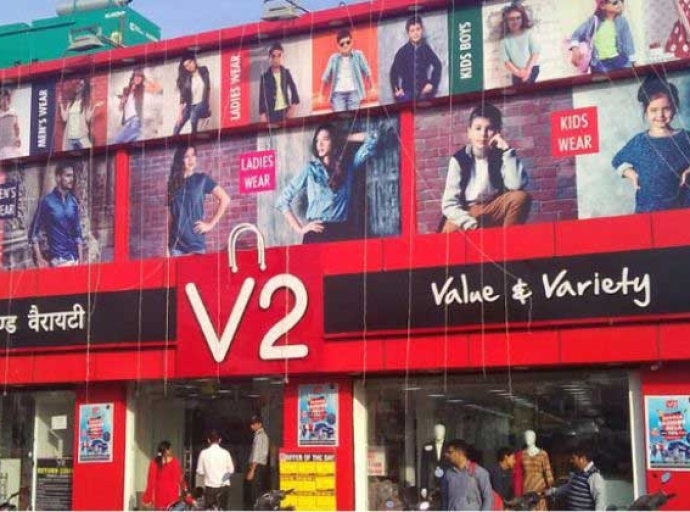29 December 2022, Mumbai
Environment, Social, and Governance
The complex landscape of conflicting sustainability reporting frameworks and standards ESG; is a tripod of sustainability often referred to as the Triple Bottom Line. Companies must prioritize supply chain ESG concerns & actionable points for achieving sustainable goals.
The sector is reactive to growing regulatory compliance/government action as a push besides pull from conscious & evolving end-users.
Nuances
No brainer that the textile sector is tagged as one of the heaviest polluters to the environment and considering the climate change issue has gotten very high global attention at present; To cheer the 'Environmental Activists' The role of Environmental, Social, and Governance (ESG) factors has become increasingly important in the textile sector, as consumers demand more sustainable and ethical products.
Companies are now incorporating ESG principles into their core business strategies to enhance their credibility & reputation and gain an edge in the competitive landscape taking the leadership role. ESG factors such as reducing carbon emissions, using renewable energy, and promoting fair labor practices help to reduce the sector's negative impact on the environment and society.
Companies that adhere to high ESG standards are likely to attract more investment and gain consumer trust, leading to improved economic/financial performance. ESG considerations also play a considerable role in government policies and regulations worldwide, as countries/continents move towards more sustainable and responsible business practices.
The textile sector has a remarkable opportunity to lead the way in sustainable, ethical, fair, and responsible business practices, setting a positive/impactful example for other sectors to follow.
Outlining the developments in recent times, the sector has done well by making ESG a crucial consideration for the textile sector (T&C), offering benefits for businesses, the environment, and society, and given lenders/lending institutes are absolutely on top of the issue.
Textile Industry Outlook
Stepping back at the well-documented estimates of global textile market size which was projected at around $1000 billion in 2020, albeit it is sanguine to assume with the caveat that current global macroeconomic headwinds/geopolitics can always spoil the party; the same is likely to expand modestly at a compound annual growth rate (CAGR) of 4.4% from 2021 to 2028.
Reasons for concern
The social impact of ESG is that ESG today is constantly on the radar/carefully scrutinized to gauge its lasting social effect and footprints and, as per the trade estimates 'Fashion Industry' has a dubious distinction of contributing as much as 10% of humanity's carbon emissions & 20% of all water pollution through its production value chain.
Trade estimates are fashion sector will produce 26% of the world’s carbon footprint by 2050
Pockets of growth; As per the industry dashboard, the volume of apparel produced is poised to go all the way to a staggering 102 million tons in 2030 from 62 million tons clocked in 2015 necessitating the need for better governance/transparent company taking care of multi-stakeholders viz. health/human rights, safety, employee relations and labour standards and, that is the caution flag raised by the trade experts.
Bright spot
A case in point is trendsetter brands like Inditex fired up the space remarkably with something called "An ESG initiative of responsible sourcing" leading from the front pledging in the year 2019 indicating to use 100% recycled cotton and polyester and, 100% sustainable textiles before 2025 to prove a point.
Environmental Empathy
Environmental issues of concern such as greenhouse gas (GHG) emissions; waste management; climate change amongst other fringe components. Underlying organizational competencies, a rising consciousness, and regulatory overhang/ outreach are the name of the game. Companies must prioritize supply chain ESG concerns & actionable points for achieving sustainable goals.
An ESG Snapshot
Each sector needs a long-term ESG vision. The regulations through the years have elevated ESG requirements across industries/sectors.
Building blocks: Companies Are Increasingly Responding to Increasing Expectations Around ESG Becoming a Way Of Business Life Cycle (BLC). COVID-19 was only a fundamental tailwind that brought ESG to the center stage & accelerated its adoption.
Social Impact
Corporate ESG response is constantly on the radar/carefully scrutinized evaluating its lasting social effect and footprints. Environmental issues of concern such as greenhouse gas (GHG) emissions; waste management; climate change amongst other fringe components. Underlying organizational competencies, a rising consciousness, and regulatory overhang/ outreach is the name of the game. ‘S’ of ESG
The sustainability capability of textile and apparel (T&C) ESG innovation is central to solving the world’s sustainability conundrum and this consideration is reached an inflection point today.
The demand from the stakeholders puts them at the top of the agenda. ESG is receiving attention from younger customers focused on ethical buying.
Corporate stakeholders are currently emphasizing their commitments to ESG in the synergistic areas nudging business leaders to develop sustainability practices that benefit not just the bottom line but also have a more significant social impact.
Consider ESG accomplishments to be a crucial component of company performance intensifying, and integrating by aligning its goals of sustainable manufacturing and growth curve pivoted within their supply chains.
'S' in ESG
It is sanguine to maintain and argue global trade observers that total sustainable debt issuance reached a record high in 2021 and is set to keep sustainably growing in 2022/23 in the textile sector given its dubious image of polluting the planet.
ESG innovation in a sustainable supply chain management (SSCM) sticking to its principles leads to benefits not just to the bottom line but also has a significant social impact aligning businesses’ goals of sustainable manufacturing & growth curve pivoted within their supply chains.
‘G’ in ESG
G, governance, fundamentally is a framework of discipline built within the system of basic practices, controls, rejigging, and mechanisms/procedures businesses are ought to adopt for better governance aiming at making informed effective decisions, required adherence to the law of the land, and in the process meeting the expectations of multi-stakeholders involved in the eco-system.
Responsible sourcing and farming besides responsible manufacturing are essential components of ESG activities. The implementation of ESG in a company is an important consideration Businesses offering ESG more effectively are likely to perform better on traditional metrics.
Consumer-facing; To assess how processes and systems influence society and the environment at large. ESG is about ‘Good Governance’; Be a torchbearer by being a more transparent company with better governance.
Preface
Taking care of health/human rights, safety, employee relations, and labour standards type of issues in the supply chain of the communities they serve to involve the governance of firms and other investee entities. A legitimate yardstick to measure/assess companies, trusts, and entities on how well they fare on sustainability parameters.
The textile sector is one of the biggest polluters in this industrialized world producing a sizable amount of wastewater. Presents a significant chemical challenge to handle fabrics using several ecologically scarce, non-biodegradable substances.
Getting ESG right for the textile industry
Environmental issues of concern are greenhouse gas (GHG) emissions; waste management; climate change amongst other fringe components. The complex landscape of conflicting sustainability reporting frameworks and standards ESG; is a tripod of sustainability often referred to as the Triple Bottom Line.
Underlying organizational competencies, a rising consciousness, and regulatory overhang/ outreach are the name of the game Companies must prioritize supply chain ESG concerns & actionable points for achieving sustainable goals. Textile Industry Outlook ESG is more than ticking boxes.
The sector must protect customers' rights Concerns about exploitation & forced labor are rising. The risk of doing business with suppliers non-compliant with ESG frameworks is real Increasing pressure from NGOs, and regulations in the developed nations. Give manufacturers a sizable financial and physical duty for collecting and disposing of post-consumer trash
New Paradigm; Presently it is quite an accepted practice in business enterprises as an accretive dimension in their range of activities of aligning, integrating, and closely overseeing/monitoring these parameters of absolute importance such as giving manufacturers a sizable financial and physical duty for collecting and disposing of post-consumer trash.
ESG has a purpose
Businesses must commit to creating meaningful change.
As a larger purpose, responsible organisations are turning to ESG-friendly/generating positive effects for society. The business imperative for investors as the climate change/sustainable growth model clamour rises.
Supply chain managers are tasked with ensuring that suppliers/vendors adhere to ESG criteria.
Given that the demand for greater ‘Transparency and Traceability’ continues to rise sanguinely, some trade studies estimate the global market for ESG ratings presently to be $200 million or thereabouts and optimistically is projected to go up to $500 million within the next five years or so.
SDGs & the climate action
Push for Sustainable Development Goals (SDGs) and the climate action movement gaining momentum. The sustainability framework is changing rapidly around the globe.
In India, ESG issues particularly given the clamour around climate change have become far more widespread as regulators are stepping up. Organizations are already implementing & complying with standards provided by the Global Reporting Initiative (GRI).
Organisations are trying to align with the Sustainability Accounting Standards Board (SASB), and with the UN's Sustainable Development Goals (SDGs). Sector commitment to the implementation of ESG and to support the achievement of the SDGs is only getting stronger.
Concerns around ESG
An overview; Investors focusing on responsible & sustainable investing ESG investing so far has got many takers in Europe thus far. It has also gained currency in the US and Asia is playing catch-up.
Asset managers start to take into account path-breaking sustainable ESG business solutions ideas. ESG business solution Investment exposure decisions critically look to decouple risks associated with ESG disputes and prospective claims. Challenges & threats
Need of the day; Make a business case underpinning Environmental, social, and governance (ESG). considerations Obtaining ESG metrics from supply chain partners and third parties to validate.
Unpredictability/precariousness around ESG is likely to impact the risk-return trade-off, social impact, and economic welfare and so are its natural outcomes. E&Y survey puts it; 74% of investors worldwide are more likely to divest from companies with poor ESG track records Distant regions where environmental and labor standards were previously less severely enforced are likely to be subject to increased scrutiny.
The ESG project provides an accurate and up-to-date map of the supply chains Mechanism to identify vendors and subcontractors for enabling the journey.
Regulatory compliance
Risk Premium/Disputes and prospective claims; It is a great yardstick to evaluate the robust health of any firm's/project's performance and risk evaluation overweighing it Vs. Conventional business metrics.
Sector investment outlook Given the challenging global business environment non-financial dimensions/criteria in harmonic sync/integration with criteria such as… environmental, social, ethical, and governance practices makes it business investment decision imperative both for lenders//VCs/investors/the stock market investors alike.
The Apparel Supply Chain Transparency Pledge, statute & transparency standards that may be met by businesses. The increasing investigation, auditing, and reporting around evaluating companies complying & putting in the required safeguards to achieve their ESG goals is the order of the day. ESG business solution investment exposure decisions critically look to decouple risks associated with ESG.
ESG compliance
What investors/stock market observers care for in any project/deal coming up for investing stares at the prominent concerns/important barriers of the evaluators. Green financing riding on ESG indicators such as green economic practices/clean energy drives future projects globally.
The asset pricing and portfolio implications and certain critical metrics around corporate. ESG profile Evaluating/mapping the effect/scrutiny of ESG performance on green innovation performance underpinning the health of any project/unit before any proposal/business.
BBVA in one of its trade reports on ESG mentions,", The new economic reality of the day is that up to 90% of investors will look into ESG regime compliance thus making informed decisions".
Businesses are contributing tangibly towards sustainable development, with sustainable framework/principles as their core DNA. Scrutinizing the impact of the unique ecosystem of ESG performance aligning with the intended R&D investment & day-to-day actionability across operations, processes, and practices.
Green innovation performance
As the cost of capital worldwide rises what is critical is; The scientific underpinning and validation of Green innovation performance evaluating sustainable returns as desired before drawing any conclusion. Factors like the number of green patents/green invention patents. The number of green non-invention patents possessed and subsequent work in progress.
ESG innovation leads to benefits not just to the bottom line but also has a significant social impact aligning businesses’ goals of sustainable manufacturing & growth curve pivoted within their supply chains.
Role of technology
AI & new-age technologies can help business stakeholders visualize their ESG data. Blockchain-based ESG reporting framework for accomplishing/facilitating the sustainability evaluation of any organization/listed company is a noble thought. Although, there are chinks such as inadequate levels of data authentication, consistency, and transparency, making ESG-based sustainability evaluation incomplete.
The emerging technologies are curated to support/facilitate the complex issue of raw data authentication to resolve this piece of a jigsaw puzzle. Need for standardization of ESG data collection and reporting.
Where is the action coming from
Fast Fashion & ESG; Fast fashion saw momentum is posed with greater scrutiny as lenders/investors and end-consumers in the ever-conscious globe weigh up the environmental cost of “disposable/use & throw” apparel.
The changing investor demands and consumer behaviour is driving a sustainable rise in the share of such clothes that ought to be manufactured in sustainable ways. Europe is setting the example by prioritizing a sustainable finance system at the top of its agenda.
With the EU Strategy for Sustainable and Circular Textiles, the Commission aims to ensure that by 2030, textile products have a longer life, recyclable wherever possible.
New York State earlier this year: The “Fashion Sustainability and Social Accountability Act”. The introduction of the "ESG index" in countries like Bangladesh which is trying & making green products for a while now. The extended Producer Responsibility (EPR) scheme launch is a right in the right direction.
Way forward
As there is a saying," We don't want the selective part of the world to be sustainable but overall world's selective part". Due to its longstanding reputation as a significant polluter, the textile sector is under pressure to become sustainable.
The textile sector should also concentrate on sustainability-related issues such as; Being a torchbearer by being a more transparent company with better governance. Protecting the environment and public health, workplace safety, gender equality, and satisfying customer demand for eco-friendly textile goods.
The urgency of implementing (ESG) environmental, social, and governance-based business is very important today than ever before.
Choose it before you are forced; Circular business models will no longer be an option but critical to the very basic fundamental need. Tick the green boxes as ESG is the wave of the future. In summary; The industry's future structure and character will depend on how it reacts to this need amid all sorts of complications.
Latest Publications


































